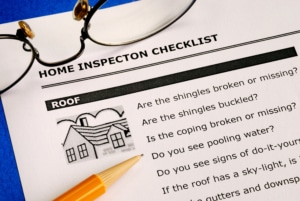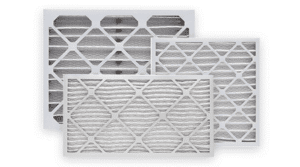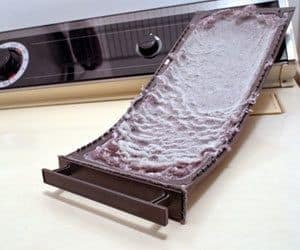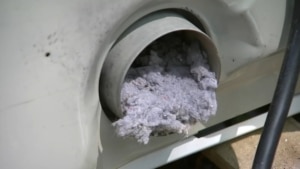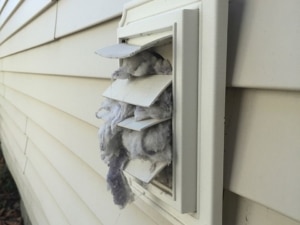Buying a house is perhaps the most serious investment most people will ever make in their lifetime. Whether you’re buying a brand new home or an older that may require a little TLC, having a professional home inspection done before you commit to a home is vitally important.
Making sure that you hire a certified professional to inspect your home is the best way to get a thorough evaluation of the home. Experienced professional home inspectors have a pretty good idea of what they need to really focus on when inspecting your home. This is because of the training and experience they bring to table for your best interest. Here are some of the most common problems we see on a regular basis:
1. Faulty, Damaged, Or Neglected Roof, Vents & Chimney
Water is your home’s worst enemy – period. Most home inspectors agree that water damage to the structure because of a faulty, damaged or neglected roof, plumbing vents, roof vents or chimneys is one of the most damaging and costly problems you can encounter. Water intrusion into your home’s “envelope” is the leading cause of wood rot, masonry deterioration, costly structural damage, foundation damage, wood destroying insects and toxic mold. Typically the most common roof issues are: outdated or worn roofs, broken or damages shingles, missing or damaged flashing and drip edge, improperly installed shingles, double or triple shingled roofs, etc.
2. Absence of a Solid Gutter or Water Run Off System
The absence of a well maintained solid gutter system can result in water intrusion to the home’s roof, fascia and overhang areas, exterior walls, windows, doors and foundations. A sound gutter system along with diversion elements – such as French Drains, ensures that the rain runoff water is directed away from your home as opposed to pooling and creating significant damage.
3. Poor Drainage and Grade Sloping
This issue is often linked to water intrusion around your home’s foundation or within the crawlspace. When the property around a home slopes toward the home – and not away from it – it will find it’s way into or under your home. That’s a promise.
4. Electrical System Issues
Another costly problem is problematic electric systems. These issues usually show up as aged outdated electrical panels, undersized panels, old cloth woven or “knob & tube” wiring, improper or unsafe electrical wiring to the panel, wrong sized wires attached to breakers, double lugged breakers, unprotected junction boxes, exposed wiring, electrical system overloads, inadequate or unsafe fuse boxes, hot spots within the electrical system, lack of AFCI & GFCI protection, unprofessional or DIY wiring, etc… While older homes have never had to meet today’s safety standards, many insurance companies will often refuse to insure a home with major electrical issues and all of these issues are critical to your family’s health and safety.
5. Older – Faulty or Inadequate Plumbing
Older homes often have outdated or risky plumbing due to plumbing materials used during the original construction such as cast iron and galvanized steel. Over time these materials break down, rust and ultimately fail at some point. When this happens serious expensive replacement cost will be involved. Many home owners often try their hand at “fixing” plumbing issues and use inappropriate plumbing materials or perform poor DIY efforts, which often result in damage. Then there are the homes that simply had original plumbing that was professionally done. Some plumbing systems may only need minor repairs to correct the issues. However, it is not uncommon at all to find a home with plumbing issues where the total system needs to be replaced.
6. Older or Neglected Air Conditioning & Heating Systems
On older homes we often find cooling and heating systems that are nearing or are at the end of their life-expectancy time frames. It is not unusual to often find systems in place that are older than the home itself. Often systems have been extremely neglected, not routinely serviced or are simply non-functional. Regardless of the situation, odds are that you will be covering expensive repair or replacement cost within the near future.
7. Older Deteriorating Exteriors, Windows & Doors
Homes built anytime prior to the mid 70’s will likely have their original single-panned wooden windows unless they have been replaced a some point due to long term exposure issues or an energy efficiency up-grade effort by the owner. Many times these homes will also have wooden siding. Unfortunately, that means the home may have inherent issues such as: improper flashing, wood rot, wood cracking, or need repainting. Wooden windows may have inefficient sealant, damaged or cracking window pane caulking, worm paint, hardware deficiencies, be difficult to open due to wear or paint, etc.
8. Foundation Flaws
Many homes have serious or significant foundation issues. If there are significant problems with the foundation of the home, you may find things such as sloping floors, doors and windows that stick, or even doors that swing in one direction when left ajar. Cracks in the foundation walls or slabs can be simply normal aging or they can be caused by a number of other serious issues. These repairs can range anywhere from simple filling and sealing to having foundation replacement, which can be a significant expense.
9. Aged Damaged Driveways & Walkways
Many homes with paved or concrete driveways and walkways may have various degrees of surface issues. Surfaces of these areas are subjected to full weather and wear conditions which can result in chipping, cracking, busting or simple deterioration and breakdown. Many times – simple cracking can be remedied by filling with an all weather epoxy based product, which will seal water out. more severe issues may require excavation and re-pouring or resurfacing.
10. Non-Professional or DIY Decks, Patios or Porches
It is almost enviable that most homes are going to have decks, patios or porches that were not originally built to today’s modern professional safety standards. Issues with these decks can range from something as simple as replacing rotten or split decking boards, repainting or resealing to complete demolition due to significant construction shortfalls and major safety issues. Make sure that your home inspector uses the 2012 Prescriptive Construction Guide to evaluate these areas.
Finally – The Most Common Problem Of All! Simple Neglect or General Disrepair
Regardless of the age of the home, poor home maintenance or neglect of the home will always lead to costly repairs. Any home that has not been maintained, will require considerable investment to return it to a manageable state. Depending on exactly what is required this can involve something as simple as repainting – or in more serious cases – significant renovations.
While there are many other common generic issues found on any home inspection, these are the most common ones we see on a regular basis.
Useful Tip: Armed with your home inspection report, you and your realtor can negotiate the outcome of any necessary repairs with the seller, whether they’re paying before you buy or you’re paying after.
